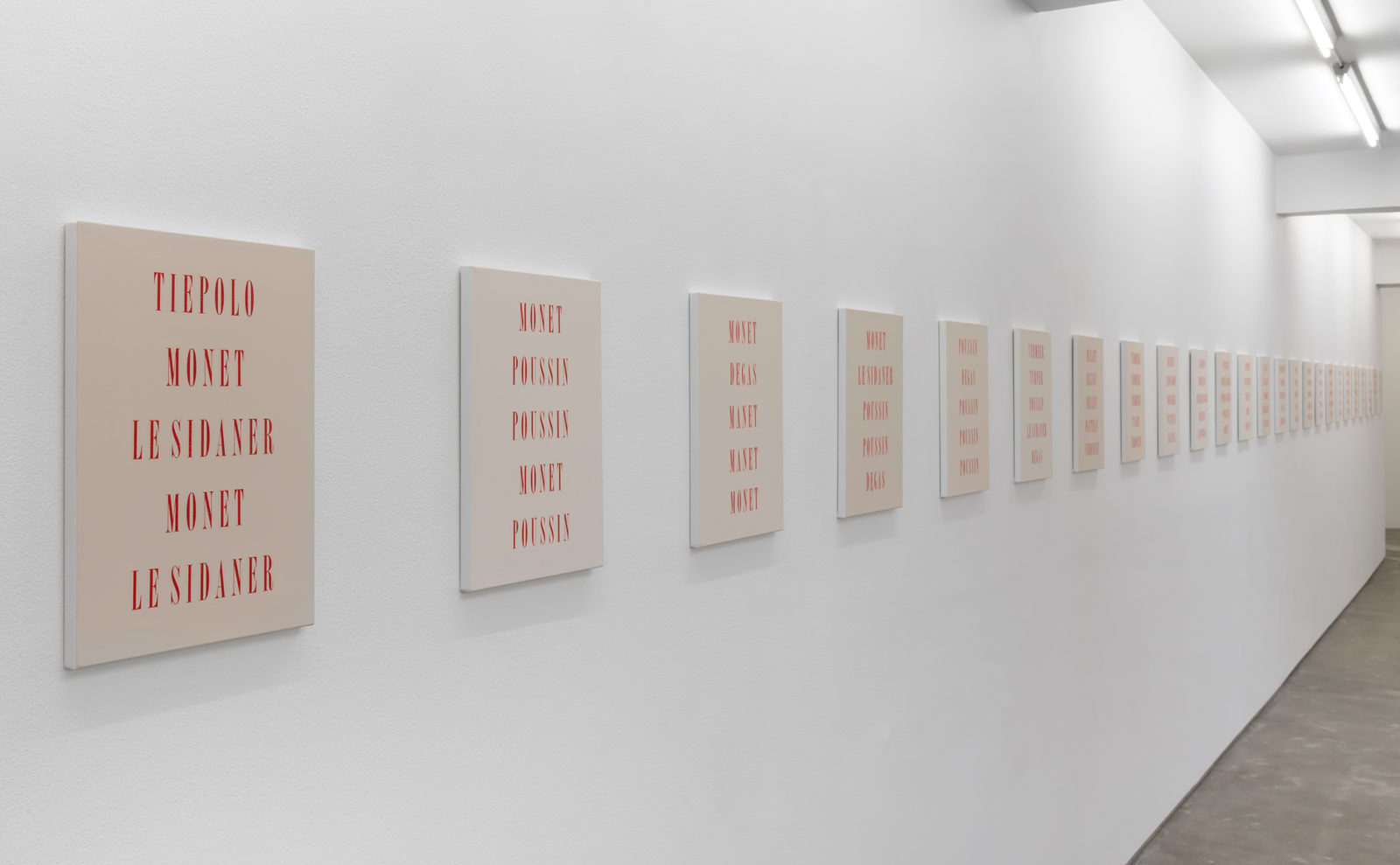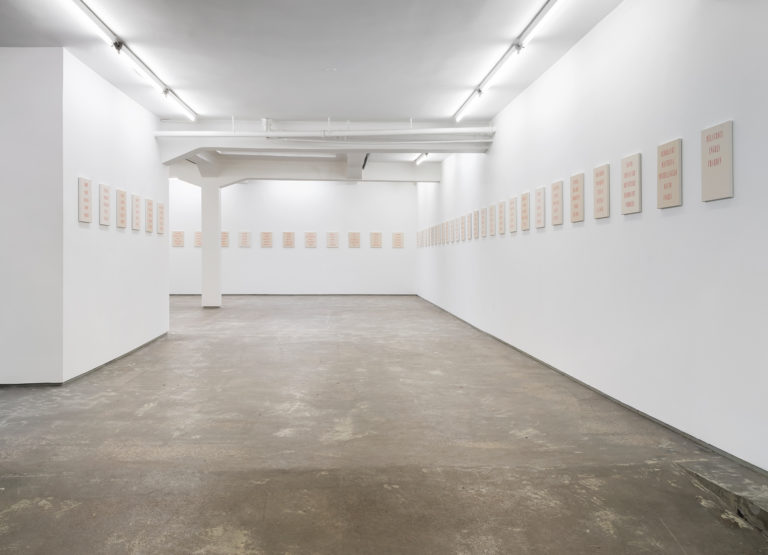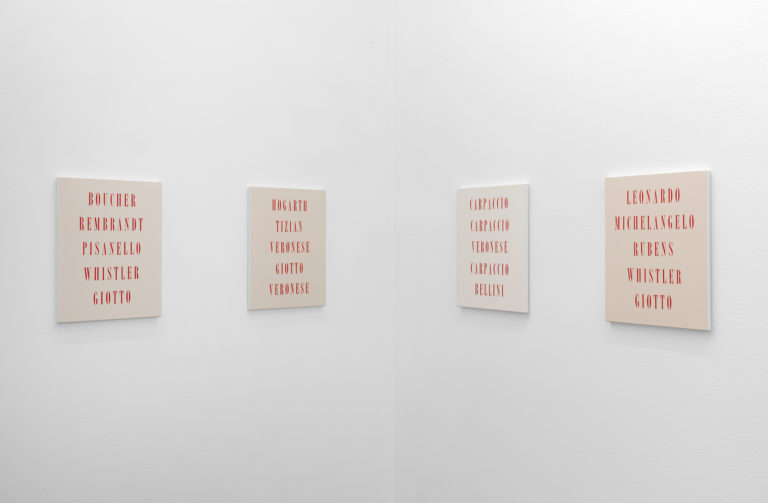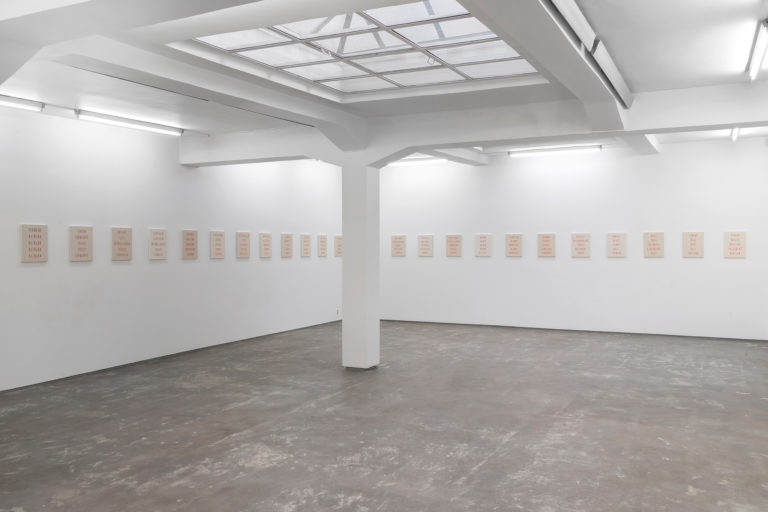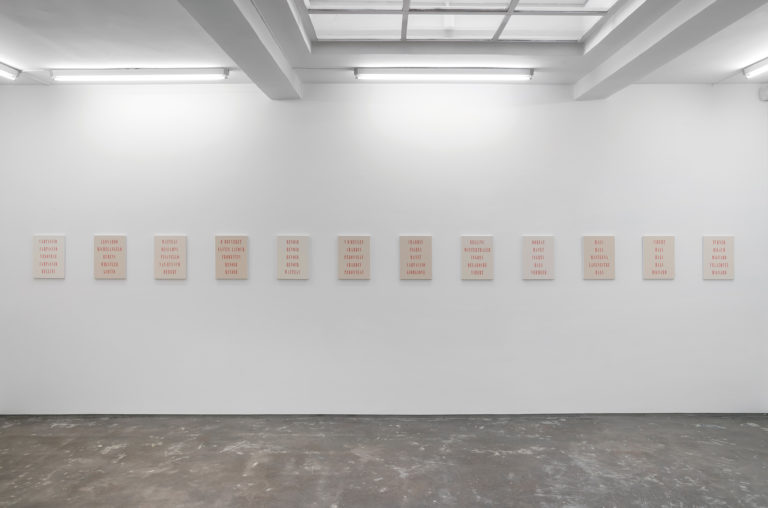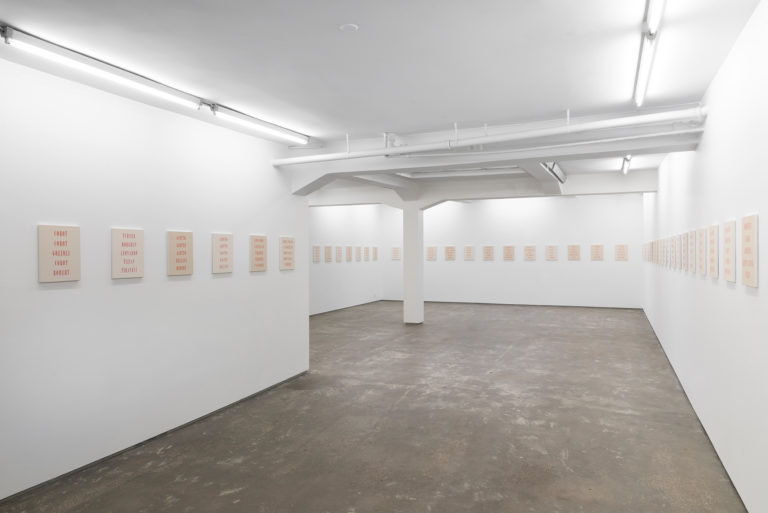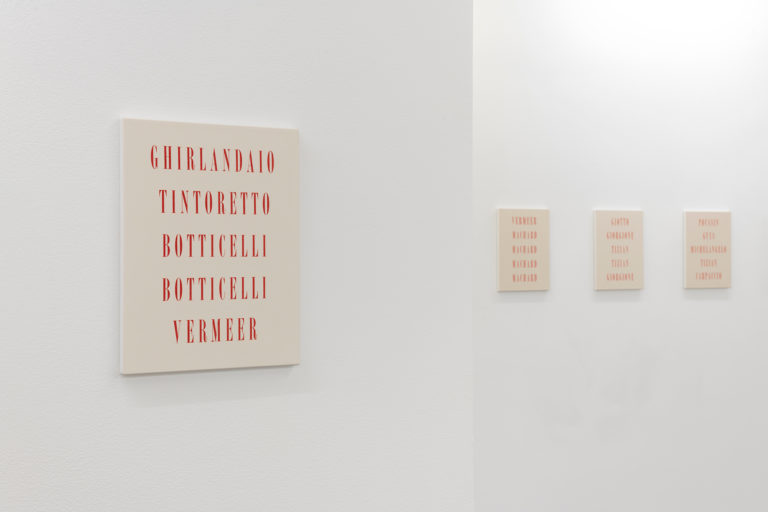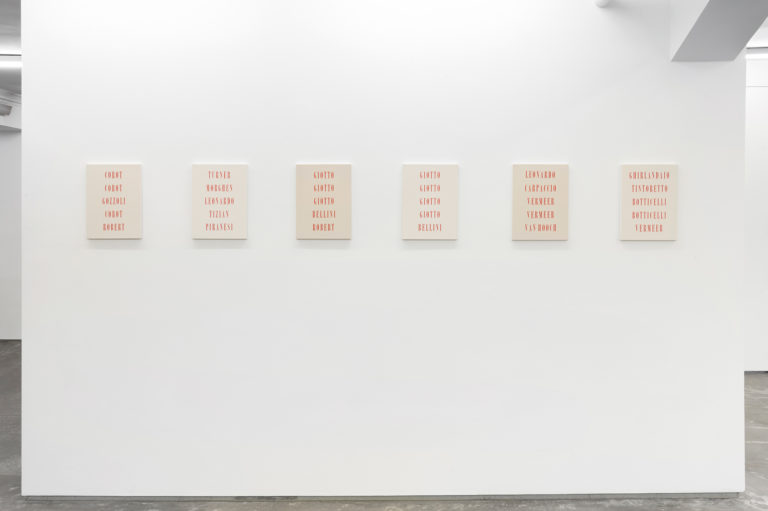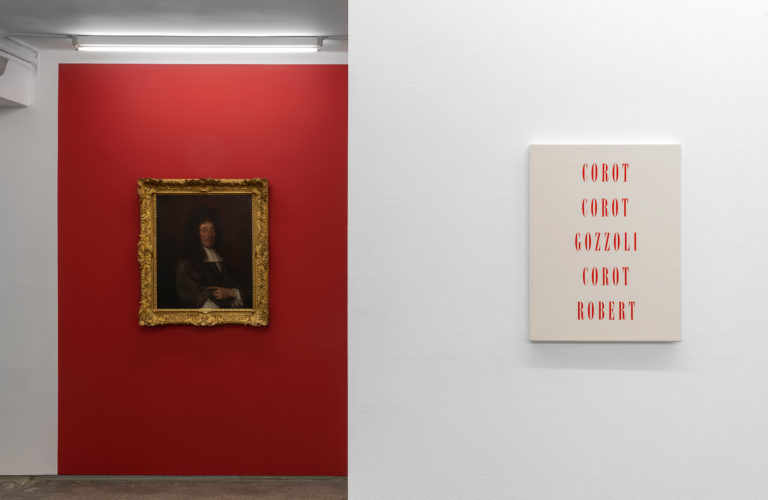OSL contemporary is proud to present the solo exhibition by Dag Erik Elgin titled In Order of Appearance, a body of works reflecting on Marcel Proust’s novel In Search of Lost Time. The show is comprised of 61 paintings, in a series bearing the same title as the exhibition.
_________________________
Giotto, Giotto, Giotto.
In the last volume of In Search of Lost Time, Proust describes something close to a cohesive poetics. Marcel, the protagonist, is on his way to a party at Guermantes’ when he trips on cobblestones. The sudden imbalance of his body reminds him of a similar incident in Venice a long time ago, where he in the same manner tripped on two uneven marble tiles in Saint Mark’s Basilica. This leap of memory, throwing him back in time, brought on by something as trivial as a cobblestone, makes Marcel understand something important about art. Through the near fall, which reminds him of something he otherwise never would have remembered, he suddenly sees the connection between imagination and reality and he simultaneously understands how to access the imagination through the sensory world – he understands how art is created.
The protagonist, Marcel, (if not Proust himself) concludes that artistic insight only happens through involuntary memory beyond reach of willpower. He also understands how to write the novel he has been trying to write almost all his life, (Proust died before the last volume was published), – the novel we are just about to finish. For the reader, the tripping leads to a simultaneous revelation of the connection between the reading and how the novel comes into existence.
A first time experience and a repetition is the symmetry and the process of every artistic practice. An artwork is always a repetition of something, of a thought that initially was immaterial, a formulated idea or an intuitive impulse. The connection between the idea and the result is a repetition challenged by the more unruly inspiration. But how to recreate an artistic idea without it losing its strength, you can’t just go around tripping on cobblestones for inspiration?
In Order of Appearance is a conceptual artwork, an idea based work. Counting and transcribing the number of artists mentioned in Proust’s literary work, a kind of parody of a metric text analysis, easily risks being dismissed as an idea that doesn’t make sense outside the action it refers to, in the same way that literary analyses in formalist tradition seem dry and pointless. But despite the facts of reality (the order in which Proust mentions artists) and despite Dag Erik Elgin’s method (he deleted all the words between the artist references) being done in a conceptual art tradition, the artwork incorporates more than its own idea. In Order of Appearance doesn’t have anything to do with Proust anymore, just like the cobblestones have lost value as sensory objects and their relation to the real world.
“So many times in the course of my life reality had disappointed me because at the moment when I perceived it, my imagination, […], could not be applied to it, by virtue of the inevitable law which means that one can imagine only what is absent,” Proust writes and concludes after tripping: “But now all the consequences of that iron law had suddenly been neutralized […]”
Whether or not you have read In Search of Lost Time and whether or not you are familiar with the artists mentioned, the list of 303 artist names and 61 paintings forms its own separate text. And Bellini, Giotto, Hals, Hals, Hals, Monet, Bellini, Giotto, Giotto, Giotto, Carpaccio, Mantegna, Mantegna, and all the other names, rhythmical and unrhythmical, heavy and light syllables that collide and are entwined with and against the sounds they make up, awaken, when said aloud, the suspicion that Proust referred to these artists in exactly this order, not because of the art they made, but because of the sound of their names.
To maintain what lies beyond the reach of volition and reason, to repeat the immediate without it becoming powerless repetition, might be the greatest challenge an artist can have, if art is to become something more than transferring information or knowledge. Elgin’s work reveals a poetic structure, (probably equally surprising and delightful to him when he found it, as it is to us), a small secret well hidden in an at times megalomaniac literary work, and similar to the experience of the essence of art, as Proust formulates it after literally tripping on it, In Order of Appearance results in a pure artistic experience. It can be sung, whispered, shouted, it can be mute reading or a visual experience, and it can be all of this at the same time, not without reverberating in what Proust calls the essence of art – the experience we’re left with after, according to Proust: our vanity, our passion, our imitative faculties, our abstract intelligence, and our habits, are undone by the work of art.
- Text by Vibeke Tandberg
- Translation by Victor Szepessy
Dag Erik Elgin was born in 1962 in Oslo and studied at the Düsseldorf Art Academy and the Academy of Fine Art in Oslo. Elgin’s work is informed by an ongoing investigation into the history of painting, modernist ideals, and contemporary visual culture. He has established a practice where the specific physical qualities of painting, historical analysis, and personal production are constantly negotiated. His projects engage in an explorative dialogue with the history of art practices, interpretation, provenance, and reception. Recent projects like In Order of Appearance, Originals Grisaille and La Collection Moderne introduce text-based works and repetitive strategies as catalysts for exploring modernism's ongoing affair with current cultural and aesthetic representations. A parallel production of texts accompanies the visual investigations.
Elgin has exhibited extensively nationally and internationally at museums and institutions including: Albertinum, Gemäldegalerie Neue Meister, Dresden; National Museum of Art, Architecture and Design, Oslo; Hamburger Bahnhof, Berlin, and Henie Onstad Kunstsenter, Høvikodden. His work is included in major public and private collections. In 2014 he won the Carnegie Art Award first prize for his monumental work Balance of Painters, first exhibited at OSL contemporary in 2012. Elgin was a professor at the Academy of Fine Art - Oslo National Academy of the Arts (2010-2016) and has contributed to numerous publications and exhibition projects addressing the position of painting within contemporary art. Recent presentations of his work include projects at the Vigeland Museum (2020); The National Gallery, Oslo (2018); Museum Kunst der Westküste, Föhr (2018); Galleri Opdahl, Stavanger (2017); Henie Onstad Kunstsenter, Høvikodden (2015); OSL contemporary, Oslo (2016, 2014, 2012); Stavanger Art Museum (2012); The National Museum, Oslo (2012); Künstlerhaus Bethanien, Berlin (2012); Galerie Opdahl, Berlin (2010) and The Institute of Social Hypocrisy, Paris (2010). Elgin has upcoming solo exhibitions at OSL contemporary (2020) and Vartai Gallery, Vilnius (2020).
